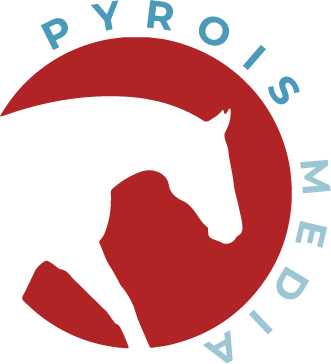Guest blog by Red Mare Marketing’s Meagan Dean
Your brand is the number one tool when it comes to defining your business. The way your company presents itself to consumers can either draw them in or drive them away. Developing a brand identity, the design or visual aspects of your business’s branding, conveys what the company does (or what products it offers) and creates a relationship with your ideal customers and clients.
But brand identity goes beyond that of simply having a logo. Cohesive design and visual aesthetics support your business’s brand and sets your company apart from your competitors.
Here are a few things to keep in mind when beginning to create your brand’s identity:
Create A Great Logo
Logos carry a lot of meaning and therefore you need to have a great one. Your logo is going to be the most recognizable aspect of your business. Whether you hire a graphic designer or create one yourself, a great logo for a business should:
- Be unique and stand out from the crowd.
- Make a statement at first glance.
- Be easily recognizable.
- Avoid stock graphics/clipart.
- Be visible.
Needless to say, when you see your logo for the very first time, you should fall in love with it. (Or, if you’re the designer, you should BE in love with it!) Your logo should be the epitome of you, your company, and your brand.
Develop A Consistent Color Palette
There are tons of studies on the psychology of colors and their effects on people. Essentially each color can create an emotion or idea. For example, red represents passion, anger, vigor, and speed. Green is often associated with nature and growth. Yellow is known to be a friendly color. Different industries in our society use colors that are particular to them. Certain colors even speak to certain genders!
The primary color(s) you choose need to resonate with your target audience. Marketing research will really help home in on who your key audience is and what area of the industry you are trying to reach, and therefore will help to guide you on what is appropriate or inappropriate for your business. Then you’ll be able to determine your accent colors (a secondary color for emphasizing and highlighting parts of your brand) and standard colors (commonly black/grays used for text) in order to put together a consistent color palette to be used across promotional and business items, your website and social media, just to name a few.
Make Sure Your Typography Matches Your Brand Personality
Typography is everywhere and, like color, it is equally influential when it comes to representing a brand’s tone and visual identity. Even the various types of typefaces used in typography create vastly different mood or effects… again, just like color! While it can be a creative but challenging journey when it comes to brand identity, careful thought and consideration to your brand’s purpose can literally make typography the visual voice of your brand.
Use Visuals That Address Your Audience
I have a really good example for this section. Just before I started Red Mare Marketing, I was scoping out potential competitors via Google through the simple internet search of “equine web design.” To nobody’s surprise there are pages upon pages of equine web designers, so I decided to just start at the top of the very first page and go from there. I clicked the very first name that was brought up at the time and when the page loaded I literally did a double-take and even backed out of the page to make sure that I didn’t click on some bogus spam ad that might have popped up.
In the header of this equine graphic and website designer’s webpage was an elaborate graphic of a koi fish. Everything on the website was geared to horses, equine professionals, and equestrians … but the very first thing that shows up is this (very beautiful) fish. I was absolutely perplexed by this and while further investigating, discovered even their social media pages included approximately 50 percent of images and graphics of fish. To this day I still am not sure how the fish ties into the equestrian industry.
It’s absolutely acceptable to have fun in order to set yourself apart from your competitors, but it’s important to ensure that your visuals (images, graphics, icons, etc.) align with your audience and ties back into your brand.

